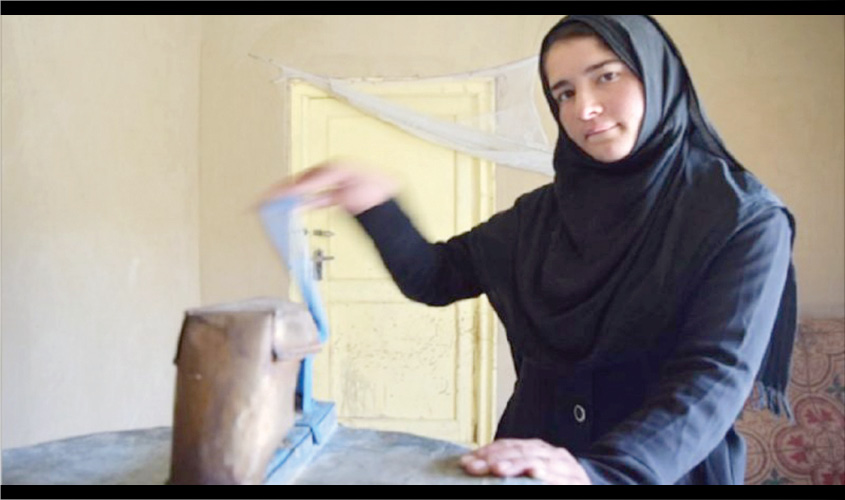MARMUL DISTRICT, AFGHANISTAN: In war-torn Afghanistan, honey is regarded as a traditional cure-all but for one schoolgirl, the sticky commodity has also created sweet opportunities to work and own a business in a country where few women do so.
Three years ago, Frozan, now 19-years-old, obtained a small loan, bought two beehives and learned about apiculture from Hand in Hand International, a non-governmental organisation that focuses on poverty.
The bees collected nectar from flowers growing near her home in the Marmul district in the northern Balkh province. Their first harvest produced about 16kg (35lb) of honey, which enabled Frozan to pay back her loan and still have money left over.
She now has 12 beehives and last year collected 110kg of honey, which earned her 100,000 Afghanis ($1,450) in a country where GDP per capita is only about $600.
“The village I live in is a traditional village and women are not allowed to work outside,” says Frozan, who goes by one name. “But when I started beekeeping I realized that it’s an easy task. I told the people about beekeeping and then they accepted it.”
Since the fall of the Taliban in 2001, the lives and status of women in society have improved significantly. But traditions, insecurity and recently a decline in international donors, have slowed progress.
A Human Rights Watch report, quoting government officials, says 85 percent of the 3.5 million children who don’t go to school are girls. Only 37 percent of adolescent girls are literate compared with 66 percent of adolescent boys.
Frozan is now in her final year of school and would like to study economics and grow her business, goals that may now be possible for her and her three siblings thanks to her income stream.
She says looking after tens of thousands of bees can easily be done between studies and household chores and her father, Ismail, who is a farmer like much of Marmul’s population, supports his daughter’s enterprise.
“It has been my dream to have a daughter who could find a job like this and make a future for herself,” he says.
Every few weeks, Ismail takes the fresh honey to Mazar-i-Sharif, the provincial capital, more than 50km away, where it’s sold to shops and consumed mainly by local customers.
While industry data is scant, local media citing government officials say Afghanistan’s honey production has risen in recent years, hitting 2,000 tonnes in 2015. Several varieties such as acacia, almond flower, and basil are now available.
However, infrastructure constraints mean most of this honey never leaves Afghanistan. REUTERS

